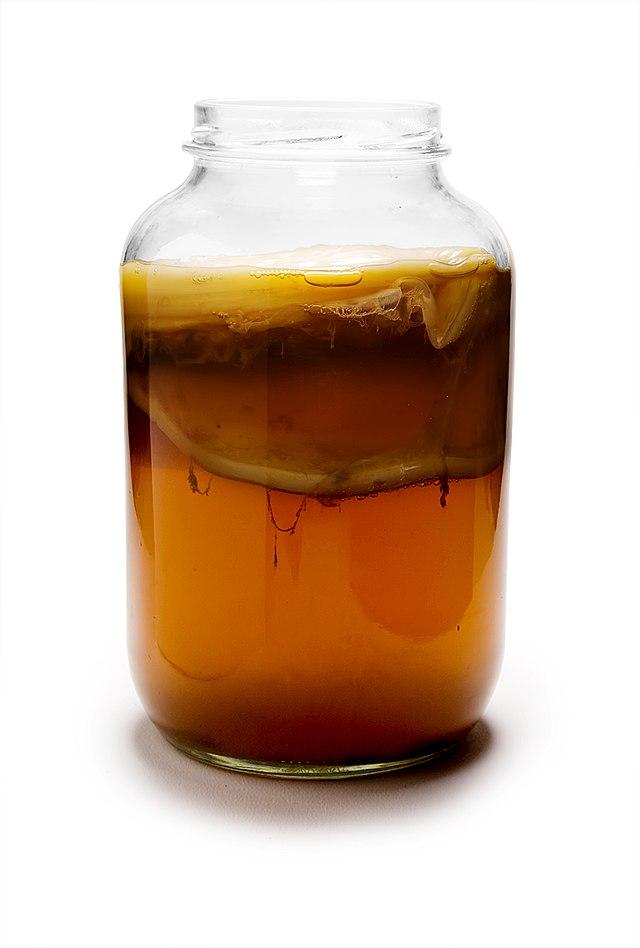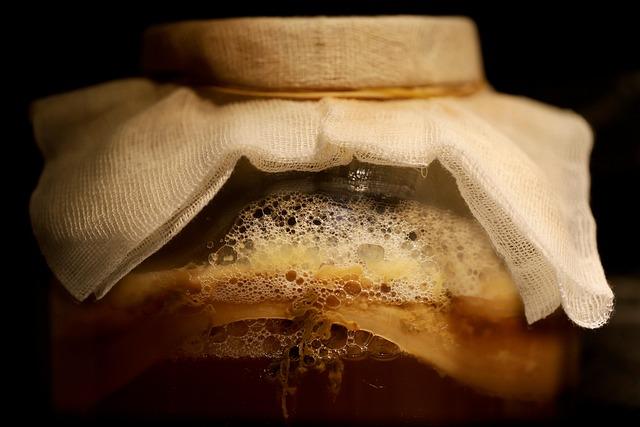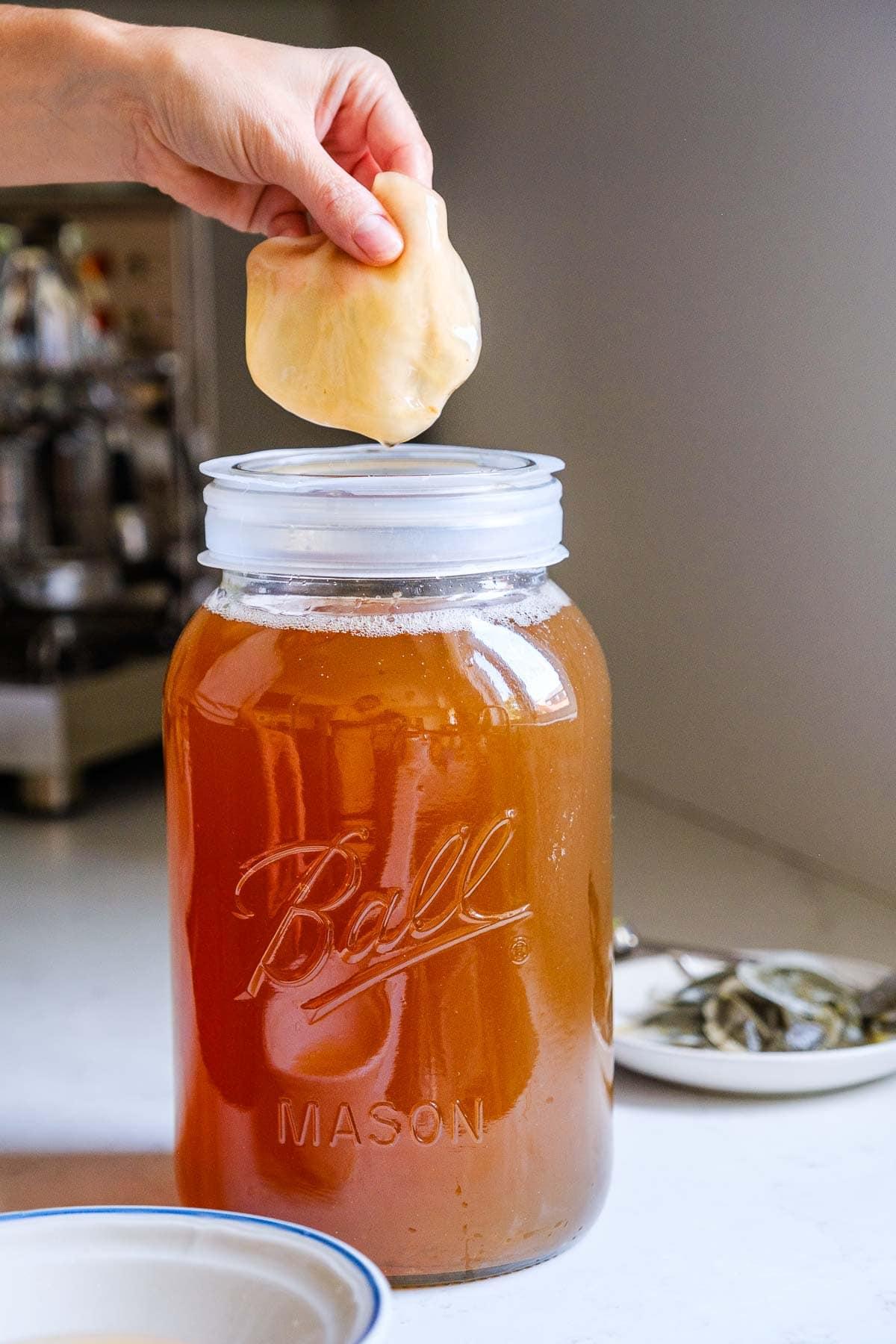Table of Contents
- Understanding the Ideal Kombucha Brewing Ratio
- Balancing Tea and Sugar for Flavor Perfection
- The Role of SCOBY and Fermentation Time
- Adjusting Kombucha Ratios for Personalized Taste
- Troubleshooting Common Kombucha Ratio Issues
- Q&A
- Insights and Conclusions


Understanding the Ideal Kombucha Brewing Ratio
When brewing kombucha, the ratio of tea to sugar to water is crucial for achieving that perfect balance of flavor and fermentation. The basic formula typically consists of *one part tea to two parts sugar and approximately ten parts water* — but these proportions can be fine-tuned based on personal taste and the desired fermentation level. Understanding these components will not only improve your brewing skills but also enhance the overall quality of your kombucha.
To delve deeper into these elements, consider the following aspects:
- Type of Tea: Black, green, or herbal varieties influence flavor profiles significantly. Black tea generally lends robustness, while green tea offers a lighter taste.
- Amount of Sugar: Sugar acts as fuel for the SCOBY (Symbiotic Culture of Bacteria and Yeast). Too little sugar can lead to under-fermentation, while too much can create overly sweet kombucha.
- Fermentation Time: This varies based on temperature and the desired acidity. A warmer environment speeds up fermentation, resulting in a tangier kombucha.
Here’s a simplified table to help visualize the ideal ratios for different batch sizes:
| Batch Size | Tea (grams) | Sugar (grams) | Water (liters) |
|---|---|---|---|
| 1 Liter | 2-3 | 100 | 1 |
| 2 Liters | 4-6 | 200 | 2 |
| 5 Liters | 10-15 | 500 | 5 |
Experimenting with these ratios can yield unique flavors and carbonation levels, so feel free to adjust them to suit your palate. Keeping a brewing journal to record these variations can help you refine your technique and discover your perfect kombucha brewing ratio over time.
Balancing Tea and Sugar for Flavor Perfection
When crafting the perfect cup of kombucha, the interplay between tea and sugar is essential for achieving a balanced flavor profile. While tea contributes to the base taste, the sugar plays a strategic role in fermentation, influencing both flavor and the effervescence that makes kombucha so delightful. It’s essential to explore the various types of teas—such as black, green, or herbal—and their unique characteristics which can elevate your brew.
Choosing the right sugar is equally important. Here are some common options to consider for your kombucha starter:
- White Sugar: The classic choice for most brews, promoting consistent fermentation.
- Coconut Sugar: Adds a hint of caramel flavor, enhancing complexity.
- Honey: A natural sweetener that may impart distinct floral notes.
- Agave Syrup: A vegan option that dissolves easily and contributes a mild sweetness.
Striking the right balance between tea and sugar depends largely on personal preference and desired fermentation time. Here’s a simple guide to help you gauge your initial ratios:
| Tea Type | Sugar Amount (per quart) | Fermentation Time |
|---|---|---|
| Black Tea | 1 cup | 7-14 days |
| Green Tea | ¾ cup | 5-10 days |
| Herbal Tea | 1 cup | 7-12 days |


The Role of SCOBY and Fermentation Time
The fermentation process in kombucha production hinges critically on the presence and health of the SCOBY (Symbiotic Culture of Bacteria and Yeast). This gelatinous mass is not just a passive participant; it plays an active role in transforming sweetened tea into the tangy, effervescent beverage we love. The SCOBY thrives on a delicate balance of ingredients, and its composition can vary based on the tea used, sugar concentration, and the specific environmental conditions during fermentation.
Fermentation time is equally crucial, as it influences both flavor and carbonation levels. A shorter fermentation period typically results in a lighter, sweeter brew, while extended fermentation brings forth a more robust, tart flavor. Home brewers often experiment with fermentation durations, generally ranging from 7 to 21 days, recognizing that longer times achieve a better balance of acidity and flavor complexity. It’s essential to taste regularly during the process to find the sweet spot for your palate.
As the fermentation period extends, the SCOBY continues to metabolize sugars, producing beneficial organic acids, gases, and a variety of flavors. The table below summarizes the typical fermentation stages based on time:
| Fermentation Time | Flavor Profile | Carbonation Level |
|---|---|---|
| 0-7 Days | Sweet, Tea notes | Low |
| 7-14 Days | Tangy, Balanced | Medium |
| 14-21 Days | Robust, Sour | High |
Understanding the intricate dance between the SCOBY and fermentation time allows brewers to fine-tune their kombucha, catering to personal preferences and health benefits. Experimentation is key, encouraging enthusiasts to find their unique ratios while appreciating the scientific marvel that is kombucha fermentation.


Adjusting Kombucha Ratios for Personalized Taste
Creating the perfect brew of kombucha is an art as much as it is a science. A few simple adjustments can transform your drink from sweet and vinegary to perfectly balanced according to your personal palate. The key elements to consider are the sugar, tea, and fermentation time. Here are a few ways to tweak these components for a taste that suits you:
- Sugar Levels: The amount of sugar you add influences not just the sweetness but also the fermentation process. If you prefer a less sweet kombucha, you can reduce the sugar by up to 25%. However, keep in mind that less sugar may result in a longer fermentation period, producing a more tart flavor.
- Tea Type: The choice of tea plays a critical role in flavor development. Experimenting with different bases like green, black, or herbal teas can significantly change the taste profile. For a milder, floral note, try using a white tea, while a robust black tea adds depth and complexity.
- Fermentation Time: The relationship between fermentation time and flavor is crucial. A standard 7-14 day ferment creates bubbly kombucha, but allowing it to go a few days longer produces a tart, bold brew. If you enjoy a more subtle flavor, reduce the fermentation time or taste it periodically until it reaches your desired level.
To help you visualize these adjustments, refer to the following table that outlines recommended ratios and expected outcomes:
| Adjustment | Desired Outcome | Ratio Example |
|---|---|---|
| Increase Sugar | Sweeter, less acidic | 1 cup sugar per gallon |
| Decrease Tea | Subtler flavor | 1-2 tbsp per gallon |
| Extended Fermentation | Tart, more complex | 15-21 days |
Keep in mind that personal preferences vary widely, and small adjustments can yield significant changes. It may take a few batches to find your ideal kombucha, so don’t hesitate to experiment. Whether you shift the sugar levels, mix tea types, or play with fermentation lengths, the goal is to craft a kombucha that’s as unique as your taste buds.


Troubleshooting Common Kombucha Ratio Issues
When it comes to brewing kombucha, maintaining the right balance of tea, sugar, and starter culture is essential for achieving that perfect fizzy beverage. A common issue many brewers face is an off-balance ratio that can lead to undesirable flavors or fermentation problems. Here are a few common scenarios and how to address them:
- Too Sweet: If your kombucha is too sweet, it often means that the fermentation process was insufficient. This can happen if:
- The fermentation time was too short.
- The temperature was too low.
- The ratio of tea to sugar was too low.
For a well-rounded flavor, ensure you are using the appropriate sugar content—generally, one cup of sugar per gallon of tea is recommended. If you find your kombucha is still sweet after the initial ferment, consider a secondary fermentation to enhance the flavors and consume the extra sugars.
Too Vinegary: On the flip side, if your kombucha tastes more like vinegar, it suggests over-fermentation. This can occur if:
- You left it to ferment too long.
- There was an excessive amount of starter tea used.
- The ambient temperature was too high.
In this case, to prevent the vinegar taste in future batches, monitor fermentation time closely and taste your brew regularly. Your brewing environment also plays a significant role in maintaining optimal fermentation conditions. Aim for a temperature between 75°F and 85°F for the best results.
| Issue | Possible Causes | Solutions |
|---|---|---|
| Too Sweet | Short fermentation time, low temperature | Extend fermentation, raise temperature |
| Too Vinegary | Over-fermentation, excessive starter tea | Shorten fermentation, limit starter quantity |
